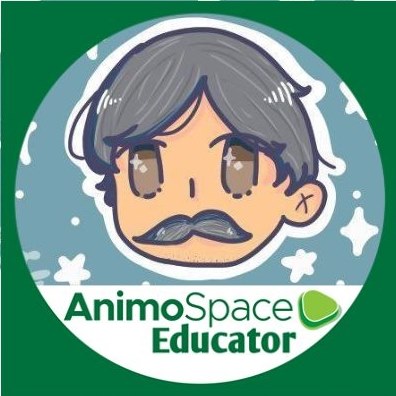Part of my task as a professor is to visit universities abroad as a visiting researcher or professor or to promote networking and collaborative activities between my university and other universities. Buying souvernir shirts from the university cooperative store is one of my "things to do" whenever I visit a university.
Nagoya University. I consider Japan as my second home. For five and a half years (1988-1994), I stayed at Nagoya, Japan to pursue my graduate studies (M.Eng. and D.Eng) in civil engineering at Nagoya University, Concrete Engineering Laboratory under the mentorship of Prof. Tada-aki Tanabe. Japan is my first trip abroad and living in Japan is my first experience to live alone outside of the comfort of home. Living in Japan then is very different now. Memories of Nagoya includes doing research with Japanese Lab members (Now Prof. Hikaru Nakamura, Dr. Denzil, Dr. Farahat, Dr. Wu, Dr, Yu and more), studying with foreign students (Dr. Suparat, Dr. Jerry Velasquez, Dr. Ge Hanbin) and surviving and enjoying life with Pinoy students and friends - Daisy, Mel, Cynthia, Pilo, Bong, Gilbert, Lani, Tess, Noemi, Nonoy, Edu, Prime, William, Glen, Sally, Jummy, Biboy, Arnel, Erwin, Indette, Ruth, Renan, Gerry, Roger, Ichie, Joe (+) and more. Whenever I visit Nagoya, memories of good times always come to me: hearing mass at Nanzan University Chapel and Mikokoro Church, volleyball games at Meidai Gym, Pinoy food get-togethers at Kaikan and our apartments, biking around Nagoya (Sakae, Osu, Fujigaoka), Midnight shopping for used goods, overnight outing at Gifu and Toyohashi, the Golden Week adventure trip at Fukui, Kanazawa and Nagano, the midnight mahjong games, AFSA trips and more. My family visited Nagoya in 2013 & 2014. Thank you friends for the memories!
 |
Nagoya University
|
Tokyo Institute of Technology. I was a visiting scientist at Tokyo Institute ofTechnology through the Japan Society for the Promotion of Science (JSPS) Core University Program on Environmental Engineering for the following programs: - “Research Topic:: Public Awareness Initiatives on Natural
Disasters and the Environment”), April 30 – May 13, 2008, Host: Prof. Hideki
Ohta
- “Research Topic:: Photo Archives on the Impact of Natural
Disasters on Infrastructures and the Environment”, March 2006 (30 days), Host: Prof. Hideki
Ohta
- “Research Topic: Application
of ANNs on Confined Circular RC Columns”, Jan – April, 2001, Host: Prof.
Kazuhiko Kawashima
It was at Tokyo Institute of Technology that I met Professors - Kawashima, Ohta, Hirose, Miki, Otsuki and more. Through the JSPS program, DLSU CE Department was able to sustain collaborative and cooperative activities like the students exchange visits, co-sponsoring conferences like WOW and TIT and DLSU professors serving as resource speakers in conferences and workshops. Through these visits I was able to discover interesting places at Tokyo City.
 |
Tokyo Institute of Technology
|
Kyushu University. I was a visiting professor through the AUN/SEED-Net Short Term Research in Japan (SRJP) with my host: Prof.
Hemanta Hazarika at Kyushu University, Japan on June 26-July 10, 2017 with my research topic: “Making Cities Resilient to Disasters:
Learning and Adapting Best Practices from Japan." Fukuoaka was my entry city to Kysuhu. My 14-day stay including with my family who followed me in the last five days was both fun and challenging. Fun, because I was able to visit Fukuoaka landmarks, eat the famous Kyushu ramen and meet my co-student and now host, Prof. Hazarika. It was challenging because during my last days there when my family was arriving, there was astrong typhoon that affected the trains; hence cancelling our plan to visit sites outside of Fukuoka. Still the Kyushu trip was enjoyable for it gave us an opportunity visit the less busy places of Japan (very different with Tokyo and Osaka).

Nagasaki University. My visit at Nagasaki University was short but productive. I accompanied Apple in her trip on August 2019 to Nagasaki and I grab the opportunity to contact a professor at Nagasaki University for networking purposes. I was introduced to Prof. Horiyuki Nakahara (Human and Engineered Environmental Science, Division of Decision Science,
Nagasaki University). I made the visit in August 10, 2019. The university was in vacation then. So it was a one-on-one meeting with Prof. Nakahara. We shared our research interests during the meeting. One of the outcome of this meeting was Prof. Nakahara accepted my invitation for him to be a keynote speaker in the ASEP SHAKE Conference in November 2019. I love Nagasaki. Life is slow and simple. Apple and I were able to visit the WWII Nagasaki Bombing museum and park and the museum for the Christian missionaries killed in Nagasaki.

University College London. Through the PRISMH Project (System Resilience of
School Infrastructure in the Philippines Exposed to Natural Hazards) funded by the Newton-Agham Institutional Links Grant Agreement
2016, I was able to visit the University College London (UCL) at London, UK in many occasions for meetings and workshops. With my DLSU colleagues, Dr. Lessandro Garciano and Engr. Ricahrd De Jesus and XU collaborator and advisee, Engr. Dexter Lo we visit UCL to meet our partners led by Prof. Dina D'Ayala, Dr. Carmine Galasso and more. In one visit in 2019, Apple was able to join me. London is a different city compared to Tokyo, Nagoya or Osaka which I have frequently visited. Going around is also very convenient through the Double Decker buses and the Tube (Underground Train). London is a place for meeting experts and shopping of fashion goods at discount prices at outlet malls. Food is relatively expensive and grocery is usually via TESCO. Of course, London is the place to visit museums and parks and landmarks like the Big Ben which we often see in movies. Visiting London becomes convenient and fun because I meet my friends Art and Gina Fabia, London residents who always drive us around London and nearby cities like Portmouth and Coventry during our visits. This shirt is a souvenir given by our UCL colleagues. Thanks!


































